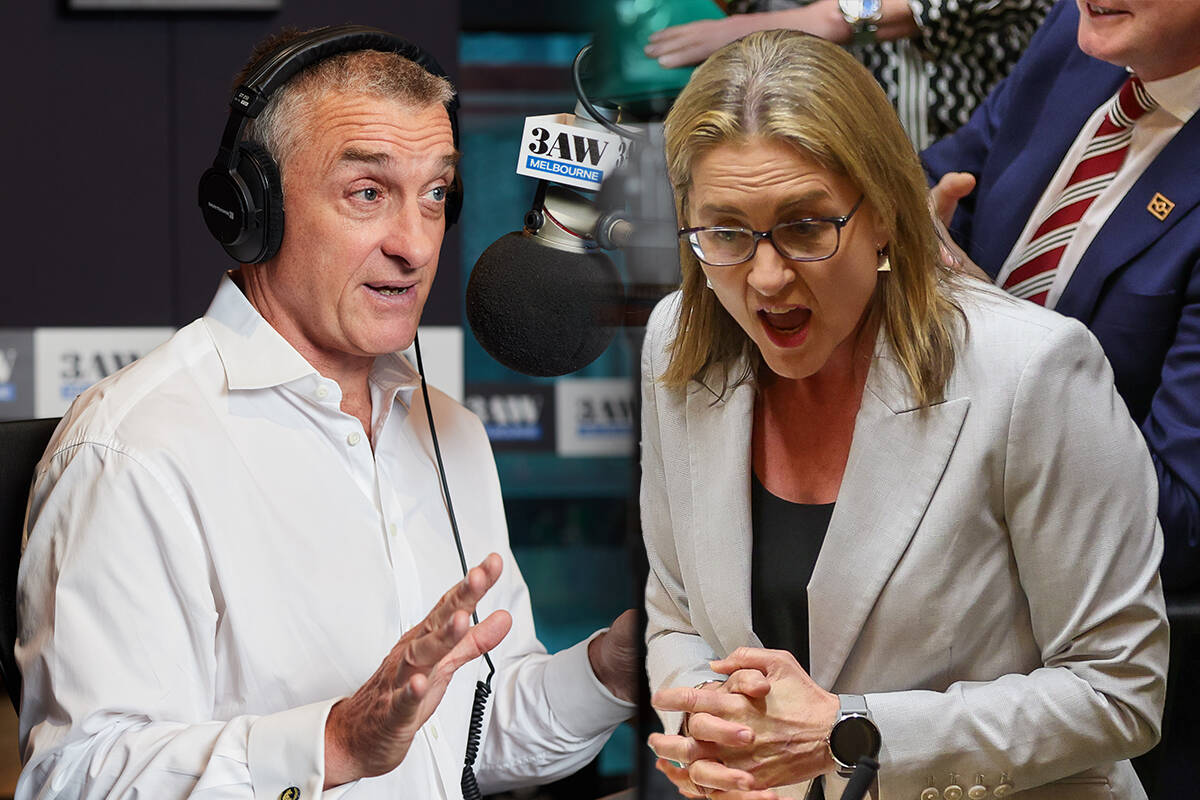The boss of the Inland Rail freight link has insisted the trouble-plagued line “is not stalled”, as he hit back at industry concerns over the government’s lack of commitment to the second half of the overbudget megaproject.
Nick Miller, Inland Rail’s CEO, also criticised negative media coverage of the line’s progress, amid questions of the utility of the project if only the initial Melbourne-to Parkes-phase – which the government has committed funding to – comes to fruition but already-constructed parts of the northern section up to Brisbane, such as between Narromine and North Star, remain disconnected.
Envisioned as a freight rail link capable of running double-stacked freight trains between Melbourne and Brisbane in 24 hours, the Inland Rail project has attracted criticism from experts and regional communities over the planned track alignment in light of flood risk, port access and other environmental concerns.
When the Coalition committed to delivering the project in 2017, the estimated cost was $9.3bn. In 2020, the project’s cost was estimated at $16.4bn with a completion date of 2026-27.
However, a review into Inland Rail released in April last year found the projected cost had grown to $31.4bn with an expected completion date of 2030-31. In response to the review, the Albanese government prioritised delivering half of the Inland Rail first, from Melbourne to Parkes.
Addressing the Australasian Railway Association (ARA) rail freight conference in Sydney on Wednesday, Miller conceded that “like all major projects, it’s had its fair share of challenges and setbacks, and I dare say there are more to come in the years ahead”.
“However, let’s make one thing clear here today: Inland Rail is not a stalled project as was claimed in the media recently. We’re making strong progress on the ground,” Miller said, repeating it was “not a stalled project” three times during his address.
“Contrary to recent media reports, Inland Rail is still progressing in Queensland and northern New South Wales,” said Miller, who was appointed CEO in January when Inland Rail was made its own subsidiary of the Australian Rail Track Corporation following last year’s review.
“We’ll be submitting our revised environmental improvement statements for the NSW-QLD border to Gowrie section – it’s a very significant greenfield section – in mid-2024.”
Miller conceded: “We all know Inland Rail has been through a difficult time in the past 12 months, although some great progress has been made.
“We remain focused on the planned intersections from Beveridge in Victoriato Parkes in NSW by 2027. That’s key. We will continue to secure land and approvals north of Narromine to keep this vital piece of infrastructure on track.”
After his address, the ARA’s chief executive, Caroline Wilkie, raised with Miller concerns from freight rail operators about the uncertainty of Inland Rail.
“From within the room and from government messaging the industry will probably feel that whilst there is momentum, it’s momentum in a holding pattern,” Wilkie said.
“At what point will the commonwealth say, ‘We’re going ahead, this is the plan, this is the money and this is the timeframe’?”
Miller responded: “The commonwealth has never stepped away to say that this project will not be built. What the commonwealth has said is this project will be phased.”
Miller said his organisation was still working to get environmental approvals to get a “far more accurate budget” it could take to the federal government for the cost of the second stage of the project.
Despite construction beginning in sections north of Parkes, the Albanese government is yet to guarantee funding or a timeframe for the second stage of Inland Rail to Brisbane.
Miller appeared at the ARA conference as rail freight bosses grappled with questions about how to reverse a decades-long trend away from rail freight towards trucks, and questioned the fees they face for track access compared with road operators’ costs.
The share of non-bulk freight – including manufactured goods, produce, post, foods, drinks and most other items – transported by rail in Australia has dropped to 17%, and just 11% across the eastern seaboard, according to the ARA.
Between Melbourne and Sydney, just 2% of freight is taken by rail, the research found, down from about 40% in the 1970s, according to Bureau of Infrastructure and Transport Research Economics.
Freight transported across Australia by rail has dwindled to such minuscule levels that emissions targets will be unachievable without policies to counter the country’s over-reliance on heavy and polluting trucks, the industry has warned.
I hope you appreciated this article. Before you move on, I wonder if you would consider supporting Guardian Australia’s rigorous, independent reporting.
Our journalism holds the powerful to account and gives a voice to the marginalised. We cut through misinformation to arm Australians with facts, and expose corporate greed amid a cost-of-living crunch. Our journalism has sparked government inquiries and investigations, and continues to treat the climate crisis with the urgency it deserves.
This vital work is made possible because of our unique reader-supported model. With no billionaire owner or shareholders to consider, we are empowered to produce truly independent journalism that serves the public interest, not profit motives.
The Guardian

